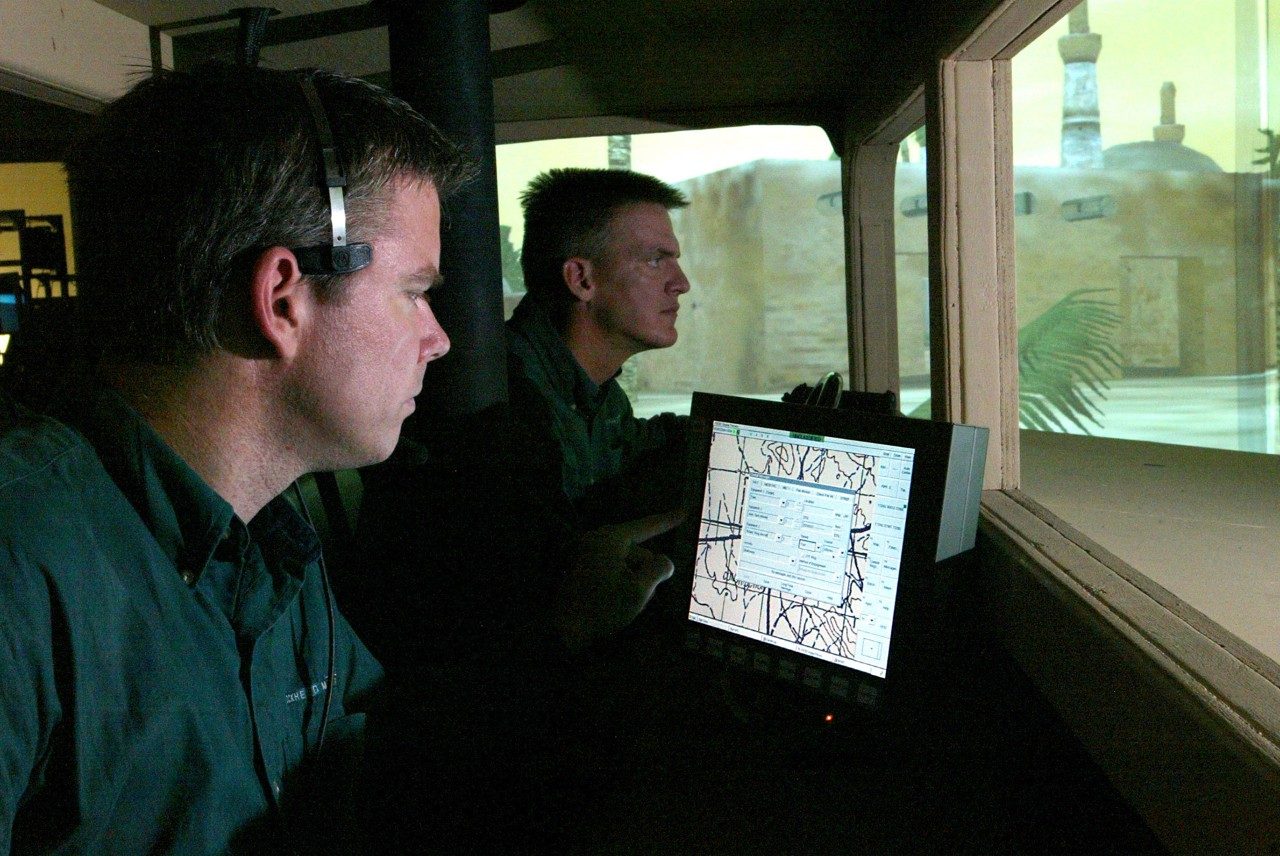The call to action came during a lecture by a senior military official to industry in 2004. Rates of convoy-related casualties in Iraqi, he announced, were at unacceptable levels, and rising. He couldn’t guarantee any contracts nor offer any formal requirements, but he needed a new technology to help protect U.S. soldiers overseas—and he needed it fast.
Who, he asked, could help?
The answer came from employees at Lockheed Martin’s facilities in Orlando, who conceived and created in a matter of just 60 days a new virtual reality combat simulator that would go on to save lives by faithfully recreating the rigors of warfare in a trailer no bigger than an oversized RV.

The Simulator that Saved Lives
Before the advent of Lockheed Martin’s Virtual Combat Convoy Trainer (VCCT) in 2004, U.S. soldiers had to rely chiefly on classroom lectures and videos to prepare them for the complex logistical convoy operations that awaited them overseas.
The VCCT changed that. It mounted a stationary full-scale Humvee in a room lined with oversized monitors, creating the illusion that soldiers were driving through arid desert terrains and Middle Eastern cities. Using input from the military, realistic scenarios of insurgent attacks were programmed into the scenes, testing soldiers’ reactions to everything from roadside bombings to sniper attacks.
Sitting in the Humvee, soldiers could fire back using special laser-pulse machine guns, while others attempted to establish communications amidst the deafening sounds of gunfire and explosions. Most impressive of all, each simulator was packaged inside a trailer, allowing them to be quickly shipped overseas and easily moved from military site to military site across the Middle East.
“The first year we put about 100,000 troops through simulations,” said Chester Kennedy, Lockheed Martin's vice president of engineering, global training and logistics. “And a lot of us still have e-mails from soldiers that sent back notes saying, ‘You saved my life.’”

Anticipating the Enemy
By 2008, a contract was in place for Lockheed Martin to develop a more advanced simulator, dubbed the Reconfigurable Vehicle Tactical Trainer (RVTT), which allows trainees to drive different types of vehicles in an immersive 360-degree virtual world instead of the 180-degree environments of the past.
When explosions occur onscreen, special hydraulics faithfully recreate the impact of the blast, testing a driver’s ability to safely steer their vehicles upon impact, while new programming more accurately simulates the movements of insurgents, who duck in and out of buildings and run for cover in the aftermath of a strike, adding yet another layer of protection for soldiers facing the rigors of modern warfare.
Sources and Additional Reading
- Gianopulos, Peter. “Interview with Chester Kennedy, vice president of engineering Lockheed Martin Global Training and Logistics division.” The History Factory. Conducted May 21, 2012.




